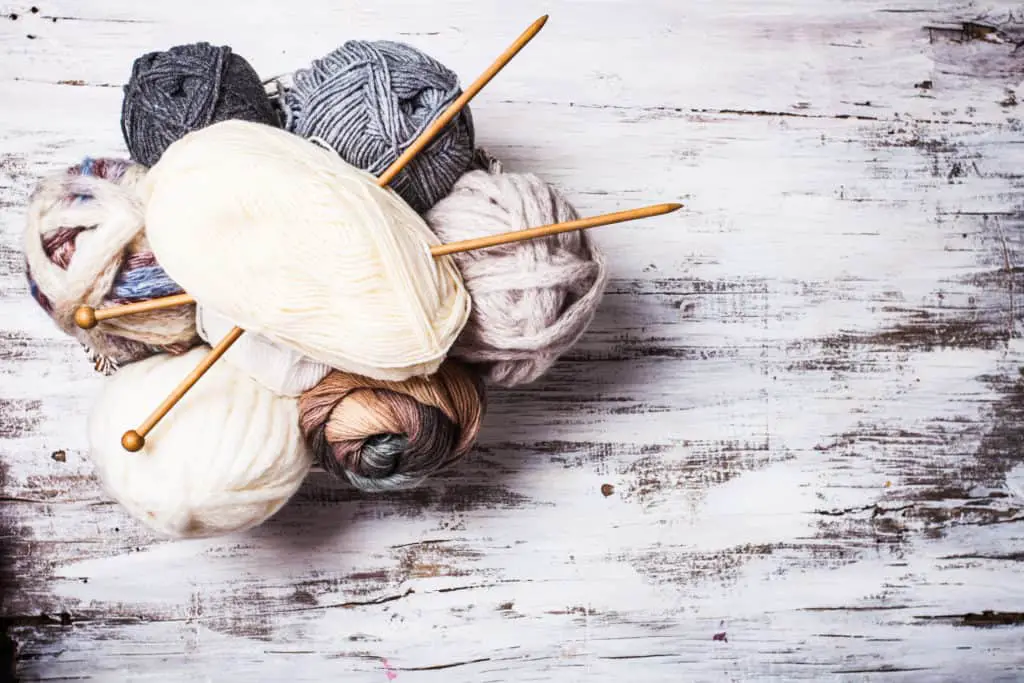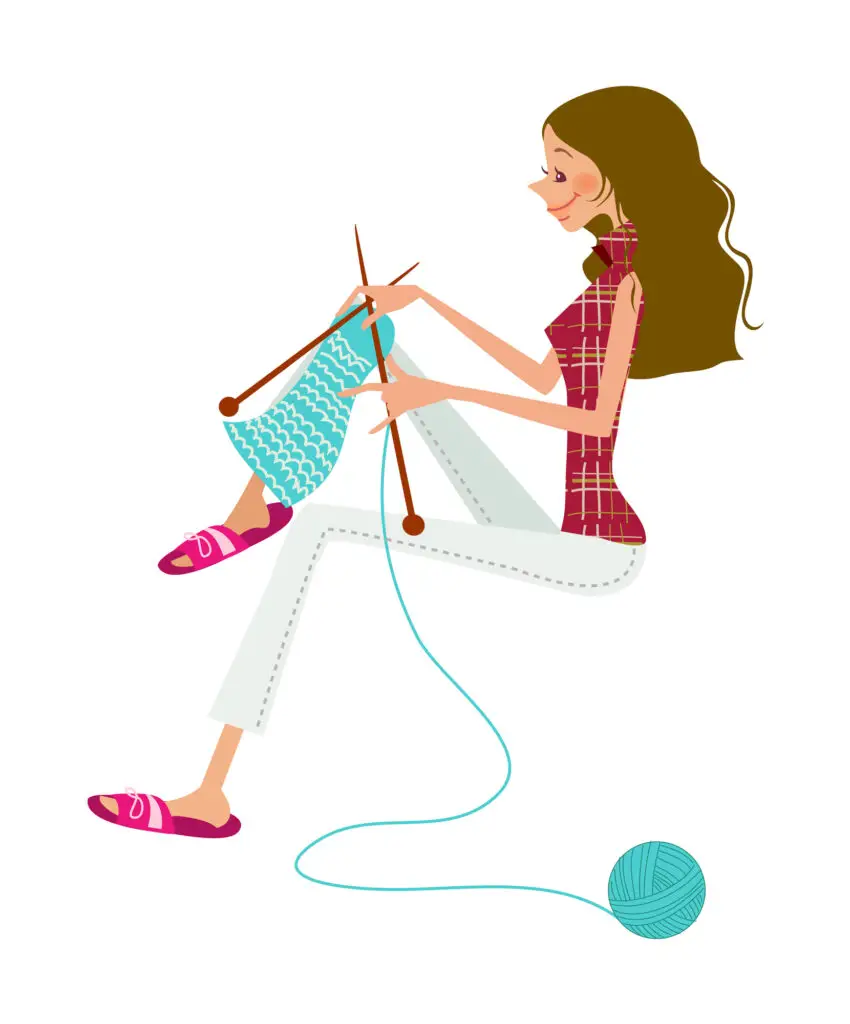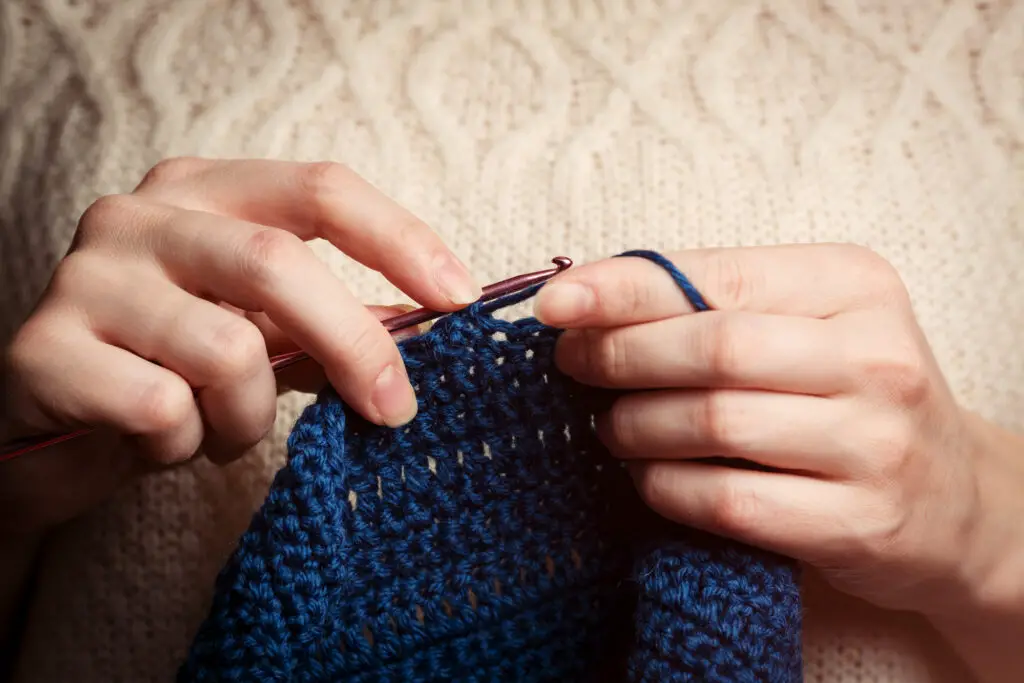Is Knitting Expensive? A Guide To Knitting Expenses
Are you thinking of learning to knit, but aren’t sure about how expensive it will be?
The truth is, knitting can be a very inexpensive hobby, or it can become quite an investment. The difference is the tools and materials you choose.

In this guide, I discuss what knitting is, and just how expensive it can be. I detail potential costs, from initial lessons, the type of needles you choose to work with, and the selection of yarns.
Once I explain the range of choices available on how much expense there is to take up knitting, you can find the perfect balance between your creativity and your budget!
What is Knitting
Knitting is one of the oldest methods of making fabric for clothing, blankets, and bags using only needles and yarn and not a weaving loom.
The method uses straight or circular needles to make either flat or tubular material, depending on the garment you wish to create.
The most significant benefit of knitting is that the material forms with interwoven loops of yarn that lock onto the previous rows of stitches as you work. These loops in the fabric give it stretch, which increases the comfort of a garment when worn.
Knitted clothing can appear simple, with a flat surface, or be quite elaborate by using advanced techniques to form patterns and raised designs.

What Does It Cost to Knit?
Many people think that knitting is an expensive hobby, but it doesn’t need to be.
Bear in mind, each project you choose to knit may require different size needles and specific yarn, so you may end up with quite a collection of supplies, which increases your overall cost.
Let me break down the comparisons between the cost for beginning and expert knitters on how much you may spend to create a women’s long-sleeve sweater.
This cost will not include the price of scissors or measuring tape since many people already own these items.
Check Out – A Complete Guide To Knitting And Crocheting
Beginners
While learning to knit, it’s always best to experiment with less expensive yarns. Doing so prevents you from investing too much in projects that may not turn out as you wish or if you find you don’t enjoy the craft.
If you are starting from scratch, without supplies or a pattern, expect a sweater to cost you around $28 in total, with the breakdown as such:
- Sweater pattern – $5
- Needles – $5
- Acrylic yarn – 5 skeins – $18 total
I arrive at this cost by using a quick search online at a major crafting store for the supplies to make a basic sweater for beginner knitters.
Granted, I did include the cost of a purchased pattern, but you can find a multitude of free designs online as well, which will drop the overall price quite a bit.
For this type of sweater, it may cost the same or less than buying a pre-made sweater of the same material from a store.
Experts
Once you progress to the expert level, your taste in yarn may grow into more unusual and costly natural fibers such as mohair or alpaca.
Another increase in cost may be patterns that include elaborate details. Lastly, an expert knitter may upgrade the needles they wish to use on projects.
Let’s take the same size of sweater, but insert the price of $130 for materials an expert knitter may choose, broken down as such:
- Sweater pattern – $10
- Needles – $10
- 100% Certified Organic Merino Wool – (5 skeins) – $110 total
I arrive at this cost by an online search at a knitter-specific store for the supplies to make a complex sweater for advanced knitters.
Again, I did include the cost of a purchased pattern, but you can save money by using free patterns available online.
I chose a medium weight yarn in organic merino wool. Advanced knitters prefer using higher grade yarns that are softer to the touch and add more texture and interest to the garment.
A sweater made with an interesting design out of quality fibers will most likely cost the same or even much more if you purchase one similar from a clothing boutique.
What Knitting Lessons Cost
Learning the nuances to knit well is best when you have a teacher demonstrating in person the techniques you need to master.
The cost of a one-on-one lesson can range anywhere from $20-$150 per hour, which is worth the investment when you are having issues with specific concepts and stitches that you can’t pick up from a pattern, book, or video.
A great way to save on cost and make new friends in the knitting community is to take group knitting classes offered by local craft guilds or stores that sell knitting supplies.
Group classes cost anywhere from $20-$100, depending on the skill level, project, and length of the course.
Classes can be a “learn to knit for beginners” course or one that offers “advanced knitting techniques.” If you have a desire to learn, there are plenty of classes out there for every skill level.
There are also knitting classes available online, where you can video link with a teacher. Prices for online courses start at around $25 per hour.
Lastly, you can save money by taking lessons from a parent, grandparent, or neighbor willing to pass on their skills.
What Knitting Needles Cost
In general, the cost of knitting needles in any material is relatively low.
The issue is that if you plan to knit as a regular hobby, you’ll probably need many different sizes and shapes of needles to complete various projects.
Buying a kit that includes a range of needle sizes saves money over individual purchases, and is a smart choice when you plan to knit often.
Down below, I explain different needle materials, what you can expect them to cost, and the benefits they offer to knitters.
Acrylic/Plastic
Plastic and acrylic needles range in price between $1-18. Plastic needles are great for people with arthritis or joint issues in their hands and wrists since the material is extremely lightweight. Plastic needles also make less sound as you knit.
Bamboo
Bamboo needles range in price from $4-$25 for most styles. Bamboo is lightweight, offers a nice smooth surface that yarn doesn’t catch on, and is environmentally sustainable. Bamboo also warms to your touch, which feels better in your hands while working than metal needles.
Metal
Most metal needles range anywhere from $2-$18 a pair. Metal needles are quite durable but can bend under stress. Metal is very slippery and smooth, which allows you to cruise along at a faster pace as you knit. The material is a favorite choice for both beginner and expert knitters.
Wood
Wood knitting needles average between $3-$12 a pair. Wood needles can break or discolor, but they do provide a smooth knitting experience. The only drawback to many wood needles is that yarn can feel like it’s gripping on the needle and not slide along as easily as you may like.
Carbon fiber
At around $8-$30 a pair, carbon fiber needles should last a lifetime and have a texture that is the perfect middle ground between slippery metal and sticky wood, so your stitches stay just where you want them.
What Yarn Can Cost
The cost of yarn per skein can be as low as $1-$2 for an acrylic fiber on sale or as high as $299 for 218 yards of Vicuna yarn from the fur of an alpaca-like camelid found only in the alpine regions of the Andes in South America.
Most knitters stick to more traditional yarns in light to medium weight when it comes to creating garments or blankets, so let’s break down the most common yarns with their average cost and benefits.

Please note that the yarn you select is the largest expense of knitted goods and the easiest way to control cost.
The following yarns are pure fibers and not blends. Many knitters prefer blends as they combine the best of different fibers, but for this article, I will not list the cost of the massive variety of yarn blends on the market.
COTTON – At around $5-$8 a skein, cotton takes experience to knit evenly since the strong fibers do not block well and make uneven stitches stand out. It is a breathable fiber, so it’s best for knitting lightweight garments.
ACRYLIC – Coming in around $3-$5 a skein, acrylic is a durable man-made fiber ideal for beginner knitters. Acrylic comes in a fun variety of colors and is a great yarn for items that need to withstand regular trips through the washer and dryer.
WOOL – At an average of $6-$9 per skein, wool is the most common yarn fiber on the market for knitters. The yarn blocks well and is sturdy and warm, but many people find finished garments itchy.
Merino Wool, on the other hand, ranges from $8-$25 a skein, is incredibly soft, and won’t cause the itchiness or allergic reactions many people have to regular wool. Merino wool tends to pill, but it does block nicely.
SILK – At $15-$30 a skein, silk is pricey but creates a shiny, stable knit that is also lightweight. The yarn is slippery, so it may take patience and experience to work with it successfully.
ALPACA – Expect to pay between $8-$15 a skein for this warm, luxury fiber that has natural thermal protection making it ideal for sweaters and blankets.
CASHMERE – At an average of $20 a skein, cashmere comes from the fur of cashmere or pashmina goats and is a favorite for its high insulation quality, as well as lightness and strength.
Conclusion
Is knitting expensive? For the average knitter, the cost is neither too high or low in comparison to other crafting endeavors.
It is comparable or much less expensive than purchasing knitted items from a store, especially when you add in the “one-of-a-kind” distinction the items you knit hold.
As you can see, the cost of supplies and classes to learn to knit is fairly reasonable for the skills you acquire.
Once you achieve a level of proficiency, the only thing stopping you from creating magnificent textiles is the price you are willing to invest in yarn and the time you can devote.
Knitting can be enjoyable and affordable, so don’t be afraid to give it a try!
